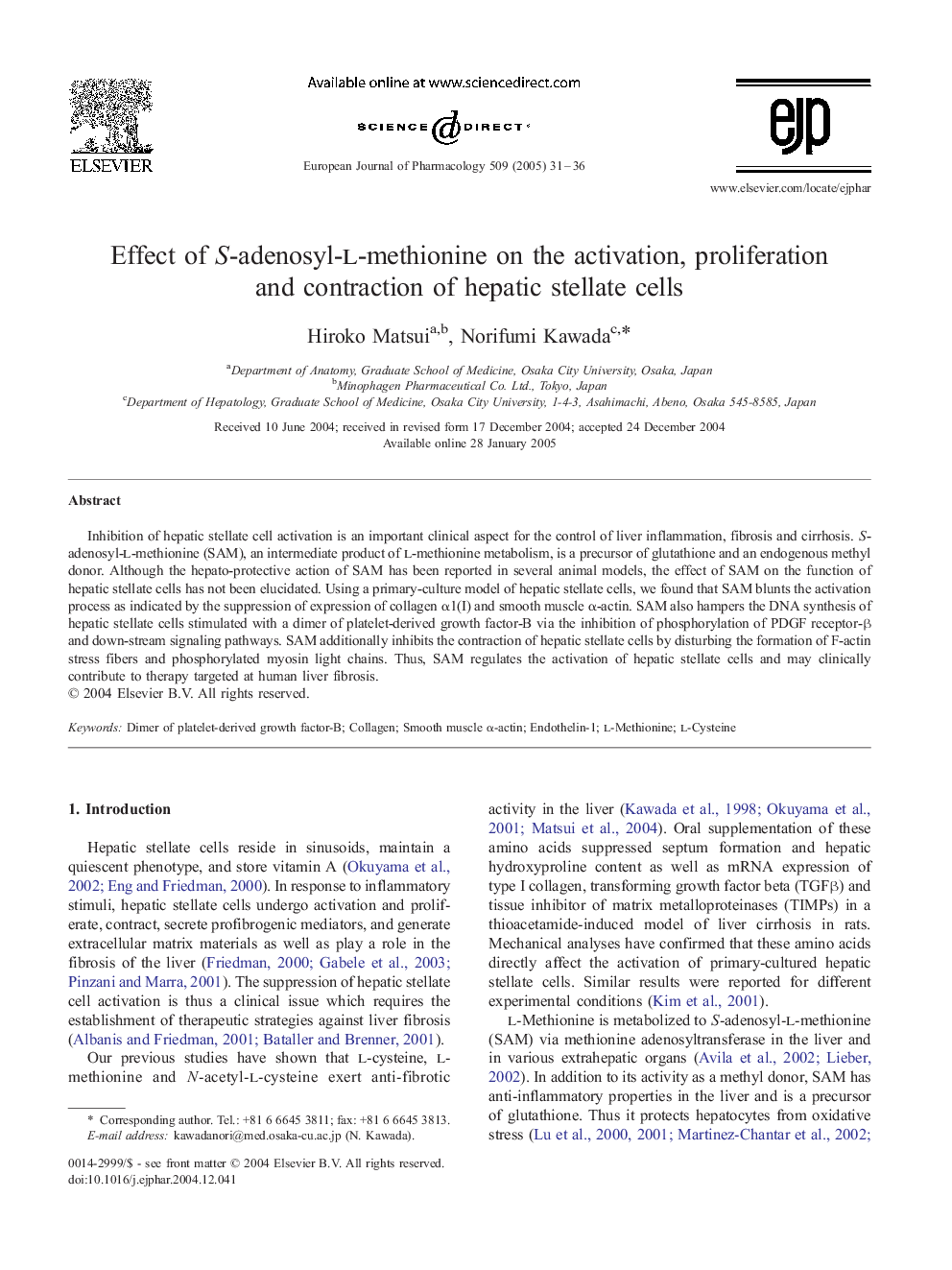| Article ID | Journal | Published Year | Pages | File Type |
|---|---|---|---|---|
| 9921506 | European Journal of Pharmacology | 2005 | 6 Pages |
Abstract
Inhibition of hepatic stellate cell activation is an important clinical aspect for the control of liver inflammation, fibrosis and cirrhosis. S-adenosyl-l-methionine (SAM), an intermediate product of l-methionine metabolism, is a precursor of glutathione and an endogenous methyl donor. Although the hepato-protective action of SAM has been reported in several animal models, the effect of SAM on the function of hepatic stellate cells has not been elucidated. Using a primary-culture model of hepatic stellate cells, we found that SAM blunts the activation process as indicated by the suppression of expression of collagen α1(I) and smooth muscle α-actin. SAM also hampers the DNA synthesis of hepatic stellate cells stimulated with a dimer of platelet-derived growth factor-B via the inhibition of phosphorylation of PDGF receptor-β and down-stream signaling pathways. SAM additionally inhibits the contraction of hepatic stellate cells by disturbing the formation of F-actin stress fibers and phosphorylated myosin light chains. Thus, SAM regulates the activation of hepatic stellate cells and may clinically contribute to therapy targeted at human liver fibrosis.
Related Topics
Life Sciences
Neuroscience
Cellular and Molecular Neuroscience
Authors
Hiroko Matsui, Norifumi Kawada,
